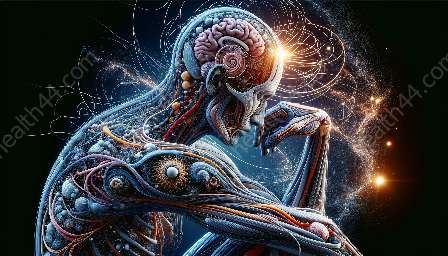Cell biology forms the fundamental basis of understanding the structure and function of all living organisms. In the context of anatomy, the knowledge of cell biology is crucial for comprehending the organization and operation of bodily systems. This comprehensive topic cluster explores the connection between cell biology, anatomy, and its significance in health education and medical training.
The Basics of Cell Biology
Cell biology, also known as cytology, is the study of cells – the basic units of life. Cells vary in shape, size, and function across different organisms, and they are responsible for the diverse functions that sustain life. At the core of cell biology lies the understanding of cellular structure, function, and interaction with other cells and the surrounding environment.
Cell Types and Functions
There are many different types of cells in the human body, each with its own specific function. Some of the major cell types include:
- Red blood cells (erythrocytes): Responsible for transporting oxygen and carbon dioxide in the blood.
- White blood cells (leukocytes): Play a critical role in the immune system, defending the body against infections and foreign substances.
- Neurons: Specialized cells of the nervous system, transmitting electrical and chemical signals.
- Muscle cells (myocytes): Enable movement and contraction of muscles.
- Epithelial cells: Form protective barriers and linings in various organs.
Cellular Structure and Organelles
Cells exhibit a remarkable level of complexity in their structure, which includes various organelles performing specific functions. Some of the key organelles present in eukaryotic cells (cells with a nucleus) include the nucleus, mitochondria, endoplasmic reticulum, Golgi apparatus, lysosomes, and cytoskeleton. Each organelle contributes to the overall function of the cell, such as energy production, protein synthesis, and waste removal.
Cell Division and Reproduction
Cell division is essential for growth, repair, and reproduction. Mitosis, the process of somatic cell division, ensures that genetic material is equally distributed to daughter cells. Meiosis, on the other hand, is a specialized type of cell division that occurs in reproductive cells, leading to genetic diversity and the production of gametes.
Cell Biology in Anatomy
Understanding the intricacies of cell biology is paramount in the study of anatomy. As cells are the building blocks of tissues, organs, and systems, a thorough comprehension of cell biology provides the foundation for understanding the structure and function of the human body.
Tissue Types and Cellular Composition
The human body comprises four primary tissue types: epithelial, connective, muscle, and nervous tissues. Each tissue type is composed of specialized cells and extracellular matrix, and their organization defines the arrangement of anatomical structures. For example, muscle tissue contains muscle cells, while nervous tissue is made up of neurons and glial cells.
Organ Systems and Cellular Interactions
Anatomy delves into the organization and interaction of various organ systems within the body. Cell biology is integral in understanding how cells form tissues, which in turn assemble into organs and work together in organ systems. For instance, the cardiovascular system involves the intricate interplay of endothelial cells lining blood vessels, cardiac muscle cells in the heart, and various types of blood cells.
Pathology and Cell Abnormalities
Aberrations in cellular structure and function can lead to pathological conditions. Tumors, for example, result from uncontrolled cell proliferation and can be benign or malignant. Understanding the cellular basis of diseases is essential in pathology and diagnostic medicine, as it provides insights into the underlying mechanisms of illness.
Relevance in Health Education and Medical Training
Cell biology is a fundamental component of health education and medical training. Proper education on cellular functions and interactions is crucial for healthcare professionals to diagnose, treat, and prevent diseases. It also fosters a deep understanding of the human body, allowing medical professionals to communicate effectively with patients and colleagues.
Diagnostic Techniques and Cellular Analysis
Medical training includes the learning of various diagnostic techniques that rely on the analysis of cellular components. For instance, microscopic examination of blood cells aids in the diagnosis of anemia and infections. Additionally, biopsies involving the extraction and analysis of tissue cells provide crucial information for diagnosing cancers and other conditions.
Pharmacology and Cellular Targets
Understanding cellular mechanisms is essential for the development and use of pharmaceutical agents. Drug targets often involve specific cellular components, such as enzymes, receptors, and ion channels. Medical training equips professionals with the knowledge to understand how drugs interact with cells to achieve therapeutic effects.
Patient Education and Cellular Health
Health education involves empowering patients with knowledge about their own cellular health. Communicating the importance of factors such as nutrition, exercise, and environmental influences on cellular function can promote preventative healthcare and overall well-being.
Conclusion
Cell biology forms a bridge between the microscopic world of cells and the macroscopic organization of anatomical structures. Its relevance to anatomy is undeniable, and its impact on health education and medical training is profound. By understanding the intricate workings of cells, healthcare professionals are better equipped to provide care, make informed decisions, and contribute to the advancement of medical science.


